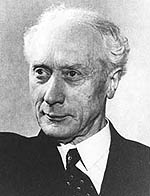| Home A B C D E F G H I J K L M N O P Q R S T U V W X Y Z |
|
Home |
Alexander Technique — Better Posture,
|
|||
A self-help therapy in which people are taught postural and physical skills to improve usage of their own body and eliminate unnecessary stress and tension.

Background and History
The creator of this technique, Frederick Matthias Alexander, was an Australian who lived in the late 1800s. A promising actor, he had problems with his voice that began to impact his career. Doctors could find nothing wrong so Alexander began to wonder if he was somehow putting undue stress and strain on his vocal organs. He began to observe himself and others to try to understand the mechanisms that influenced speech.
Over many years his observations lead him to conclude that speech was influenced by the entire posture and the balance of tension in the whole body. He further observed that these factors influenced not only speech, but also the ability to maintain tranquil under pressure, as well as breathing, correct use of the limbs, and overall health. He concluded that in fact these things were crucial for correct and healthy functioning of the body. As his voice and general health improved he gradually began to show others his technique and eventually set up a practice.
By 1904 he was very successful and moved to London, England to continue his work. Alexander proved popular in London, his client list including such eminent names as George Bernard Shaw, Aldous Huxley and William Temple, the Archbishop of Canterbury. Furthermore, his method was endorsed by many leading scientists who agreed that it was consistent with modern scientific discoveries in neurology and physiology. Sir Charles Sherrington, the 'father of neurology' was one such scientist who backed Alexander's method.
In 1931 Alexander began to train teachers of the technique. He ran 3-year training courses, which he continued until his death at the age of 86.
Alexander Technique Today
There are an estimated 2500 teachers of Alexander Technique around the world today, with the highest concentration in the UK. It is well known among performing artists and indeed is part of the curriculum at many schools of performing arts.
How Does it Work?
Alexander Technique teaches self-awareness so that the underlying causes of pain and discomfort can be identified and remedied. By using the body more efficiently, less stress and strain is put on the joints, muscles and ligaments.
Despite the backing from the conventional medical establishment since the beginning, there has been little formal research in the technique. Small pilot studies have shown improvements in balance, depression associated with Parkinson’s disease, and ease of breathing, among other things.
Article by Neil Kingham
| RESOURCES: The Complete Guide to the Alexander Technique Alexander Technique International |
|
Glossary References Links Contact
|